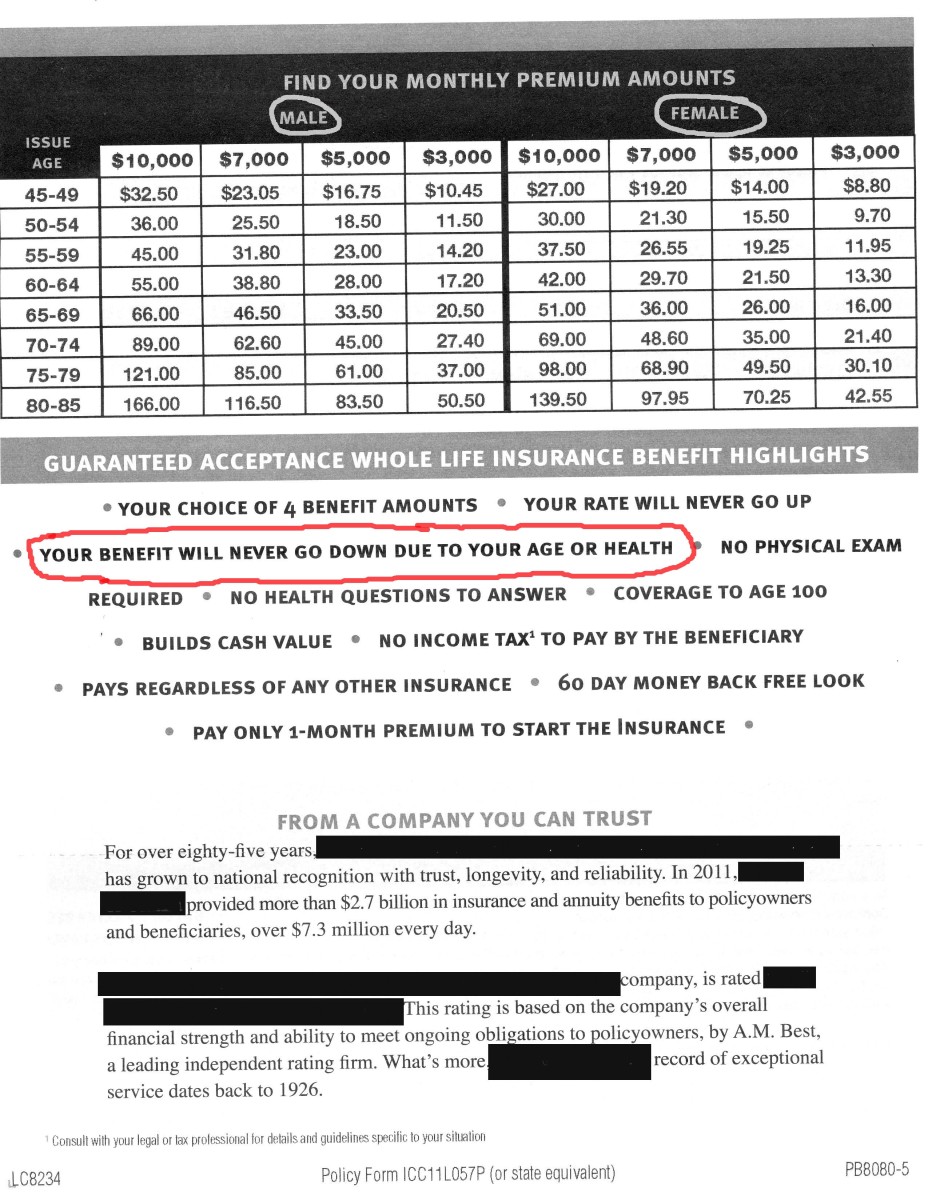Traditional Whole Life Vs Term Life
Traditional Whole Life Insurance or Term Life Insurance? Do you know which one you may need?

Traditional Whole Life
Traditional whole life insurance policies are policies that will mature at the age of one hundred. These policies begin to accrue a cash value at the policy’s third year. The percentage of the cash value accumulation varies with each company. The premiums are slightly higher than that of a term life insurance policy and of a final expense whole life insurance policy. In layman’s terms, whole life insurance is exactly that, whole life. The premiums are based on the client’s current age, health conditions, and gender at the time of purchase. The cash value can be borrowed against. But, the loan must be paid off in a timely manner. If the client dies before the debt is paid, the debt will be deducted from the death benefit. As long as the premiums are paid, the policy will remain in effect for the duration of the client’s life, or until the client’s one hundredth birthday. The rate will never increase, and nor will the benefit ever decrease, regardless of the client’s increasing age and potential age-related health issues while having the policy.
There are some riders that can be attached with an additional expense to the premium to a traditional whole life policy. These riders include;
- Long term care
- Accelerated death benefit
- Child or grandchild benefit
- Accidental death benefit
- Waiver of premium
- Disability income benefit
- And others
The cash value, sometimes called interest can be cashed out to pay for college tuition or buying a house. If a traditional whole life insurance policy is cashed out and is not used for the purpose of paying for college tuition or buying a house, the IRS will charge a heavy tax burden of around 20%. Only the cash value can be cashed out, and not the death benefit.
When the insured dies, the beneficiary will have to pay taxes on the policy's current cash value. The death benefit will not be taxed, as long as the beneficiary chooses the lump sum payment option. There are other payment options the beneficiary can choose, but, anything other than the lump sum option will be taxed as earned income by the IRS. This is also true for all life insurance policies, regardless of the type.
Medical Examination and Blood Drawn for High Face Amounts
High face amounts will require a client to undergo a physical examination and have their blood drawn for testing in a lab. Each carrier will have their own requirements for blood testing and health examinations. This is true for any insurance type regarding high face amounts.

Term Life Insurance Policies
Term life insurance policies cover a specified amount of years. Whether it be a ten-year, twenty-year, thirty-year, or even a forty-five-year term. A term life insurance policy is sometimes referred to as a temporary insurance policy. Because, a term policy only covers a portion of one’s lifetime.
The rates for a term insurance policy typically are cheaper than a traditional whole life policy.
Term insurance policies will not accrue a cash value. But, they do offer some riders that can be attached to a policy with an extra charge to the premium. These riders include;
- Return of premium
- Accelerated death benefit
- Accidental death
- And others. Just to name a few.
If the client outlives the term policy, they will be out of all of that money paid to the insurance company, if the client did not have a return of premium rider attached to the policy. Since a term policy’s rates are based on the client's current health conditions and age at the time of issue, if the client elects to purchase another term policy, the rate will increase to reflect the current status of the client’s health and age.
Some companies allow for the term policy to be converted to a related policy. Such as; traditional whole life, final expense whole life, or even an indexed universal life policy.
Term policies often are used to protect the loss of income or as mortgage protection. The client will choose what the death benefit is the protect and what the amount will be. If it is a mortgage protection, it will be the amount of the mortgage or a portion thereof. If it is income protection, it will be the insured’s annual salary, times the amount of years the insured wants to protect the household. Mostly, it is around four or five years. Sum this figure up with the amount of years the insured plans to work until retirement.
Summary
Term life insurance is temporary. And will only cover a portion of someone's life. The premiums are cheaper than that of traditional whole life. Traditional whole life will cover the entirety of someone's life, or until their one hundredth birthday. The premiums are slightly higher than that of term life. And the policy will begin to accrue a cash value, starting at the policy's third year. The choice is completely up to you as to which one you decide.

Disclaimer: It is not the intention for this article to sell a particular product or to endorse a product or company.
© 2018 Travis Helmboldt








